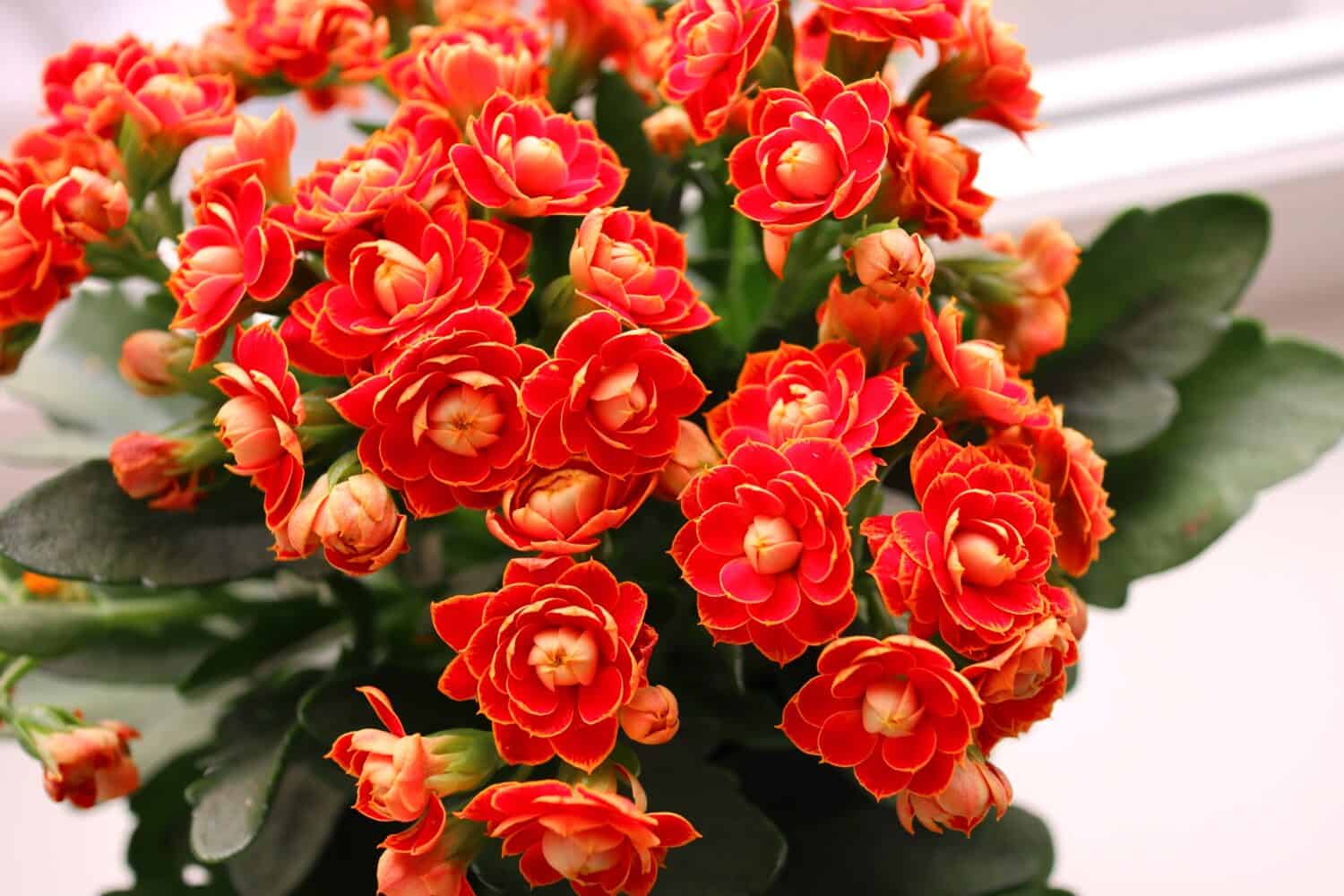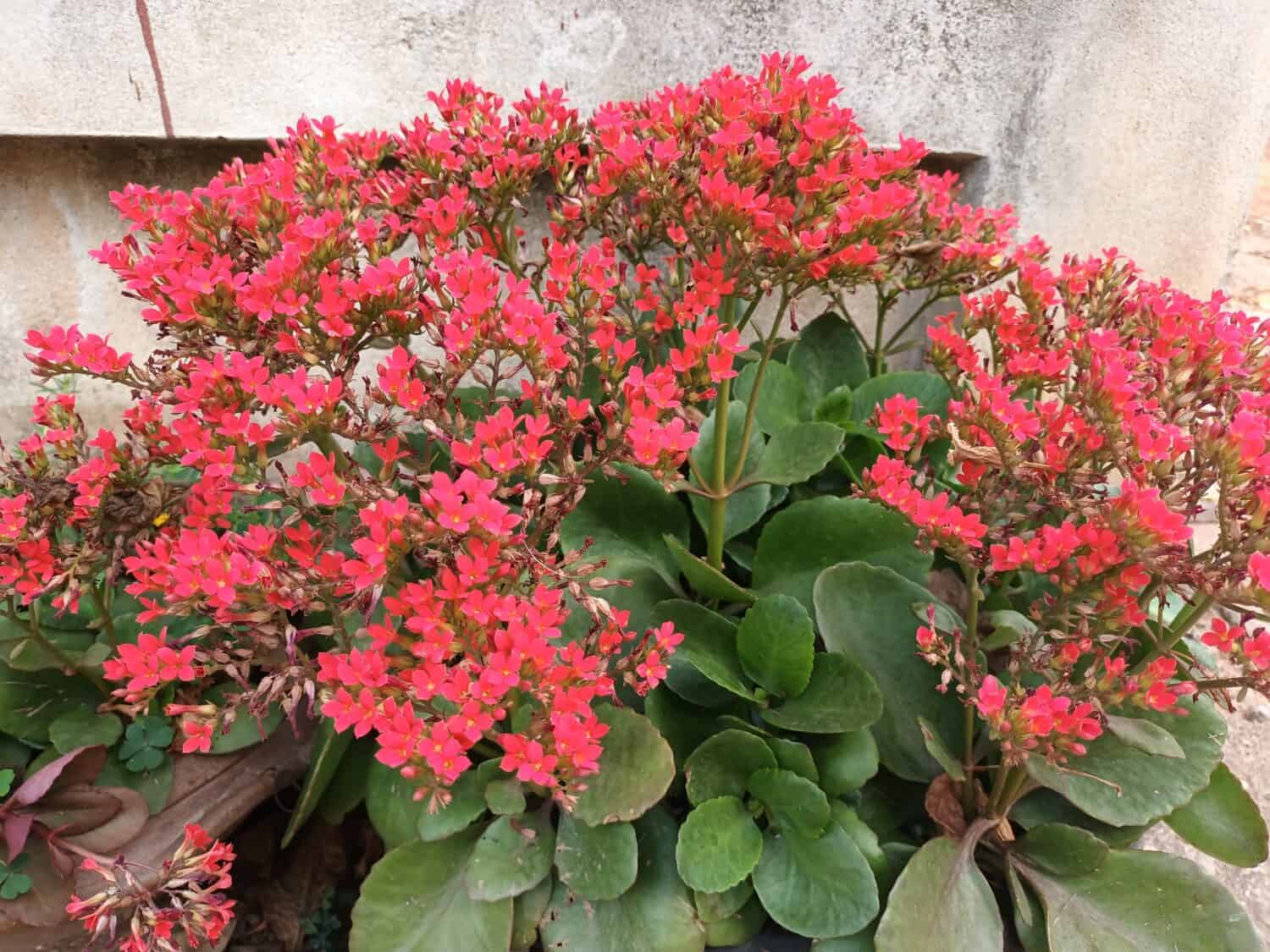With their vibrant flowers and attractive foliage, kalanchoe plants have become increasingly popular houseplants. Kalanchoes are appreciated for their ease of care, making them an ideal choice for beginner gardeners and plant enthusiasts. Beyond their visual appeal, kalanchoes are valued for their versatility – they can thrive as potted plants or be incorporated into gardens. It’s vital to know how to care and maintain Kalanchoe to keep these plants looking their best.
Kalanchoes are native to arid regions of Africa, Madagascar, and Asia. With over 125 species, kalanchoes exhibit great diversity in size, leaf shape, and flower characteristics. Some species like the panda plant (K. tomentosa) are prized for their fuzzy leaves while others like K. blossfeldiana produce blooms continuously for months. The compact K. pumila and trailing K. fedtschenkoi make attractive hanging basket plants.
No matter the species, proper care is key to growing vigorous kalanchoe plants. With the right indoor and outdoor conditions, these succulents will reward you with vibrant, long-lasting color.

It’s vital to understand proper indoor care for kalanchoe.
©Ivanka I/Shutterstock.com
Indoor Care for Kalanchoe: Providing the Ideal Growing Conditions and Maintenance Tips
Caring for kalanchoe plants indoors requires recreating the warm, sunny, and arid environment they evolved in. Here are some tips for keeping potted kalanchoes healthy and looking their best:
Light
Kalanchoes need very bright light to thrive. Provide 4-6 hours of direct sunlight if possible. An unobstructed south or west-facing window is ideal. Rotate plants frequently so all sides get sufficient sun exposure. Supplement with grow lights during fall and winter months. Most grow lights have automatic timers so you can set them and not have to worry you will forget about it. Without the proper light, your kalanchoe won’t flourish to its fullest potential
Temperature & Humidity
Kalanchoes prefer warm temperatures between 65-85°F during the day and around 60°F at night. Keep away from cold drafts. Average home humidity is fine, but avoid overly damp conditions that may lead to issues like powdery mildew.
Soil
Use a well-draining potting mix, ideally, one formulated for cacti and succulents. Add perlite or pumice to improve drainage. Re-pot every 1-2 years in spring, moving up just one pot size. Pick containers with drainage holes to prevent soggy soil.
Watering
Allow the top inch or two of soil to dry out between waterings. Take care not to over-water, as soggy soil can cause rotting. In winter, reduce watering frequency. The fleshy leaves will wrinkle to indicate when a drink is needed.
Fertilizer
Feed with a balanced liquid fertilizer diluted to half strength every 4-6 weeks during spring and summer. Discontinue fertilizing over winter when plants are dormant.

Kalanchoe can grow outdoors year-round.
©spndpatty/Shutterstock.com
Outdoor Care for Kalanchoe: Exploring Suitable Outdoor Planting and Maintenance Practices
In frost-free climates, kalanchoes can be grown outdoors year-round. Their colorful blooms and attractive foliage look right at home in flowerbeds and containers. Follow these tips for successfully growing kalanchoes outside:
Planting Location
Choose a spot with full sun to light shade. Kalanchoes need at least 6 hours of direct sunlight. Well-draining soil is essential—add compost or other amendments if needed.
Hardiness
Most kalanchoes only thrive in zones ten and above where frost is rare. A few like K. pumila and K. fedtschenkoi can tolerate brief light freezes, surviving in zone 9. Protect any outdoor kalanchoes from hard freezes.
Soil
Outdoors, sandy, fast-draining soil amended with compost or gritty materials provides the perfect growing conditions. Organic soil can sometimes often better with plants and help them thrive.
Watering & Fertilizing
Maintain moist but not wet soil, allowing the top few inches to dry between waterings. Fertilize monthly during the growing season with a balanced organic or slow-release fertilizer. Also, reduce water and stop fertilizing over winter. Many people over water their plants. Knowing how to care and maintain kalanchoe can help with this.
Pruning
Pinch back leggy growth to encourage bushiness. Prune spent flower stems back to the base to encourage reblooming. Every few years, rejuvenate overgrown plants by cutting back hard in early spring. Without pruning, your plant won’t thrive like it should.
Growing Tips
Plant in groups or clusters for best visual impact. Deadhead regularly to prolong flowering. Move container plants to shelter if hard freeze threatens. Mulch beds to help retain soil moisture and reduce weeds.

Always allow the soil to dry before watering again.
©larisa Stefanjuk/Shutterstock.com
Watering and Feeding: Guidelines for Properly Watering and Fertilizing Kalanchoe Plants
Getting the watering and fertilizing right is key to keeping your kalanchoes looking their best. Use these tips as a guide:
- Allow the soil to dry slightly between waterings, never letting plants sit in soggy soil. The soil should be dried to about a finger’s depth before watering again.
- During the active growing period of spring and summer, water thoroughly as the top inch or two of soil dries out. In winter, reduce watering frequency.
- The fleshy leaves will show visible wrinkling when the plant needs a drink. Kalanchoes should never be allowed to wilt severely.
- Water outdoor plants deeply and infrequently to encourage deep rooting. Avoid frequent shallow waterings.
- In dry climates, you may need to water hanging baskets daily in summer. Pay extra attention to plants’ water needs in breezy or sunny spots.
- Water in the morning to allow foliage to dry out before night. Wet leaves at night risk fungus issues.
- Use room temperature water, avoiding extremely cold water straight from the tap.
- Fertilize actively growing kalanchoes every 2-4 weeks in spring through fall with a balanced liquid fertilizer diluted to half strength.
- Outdoor containers may be fed with a granular organic or slow-release fertilizer in early spring and again midsummer if needed. Always follow label directions.
- Discontinue fertilizer over winter when plants enter dormancy. Resume in spring after new growth appears.
- Over-fertilization can cause leaf burn. Flush soil occasionally to avoid buildup.
Common Issues and Troubleshooting: Addressing Potential Problems and Tips for Keeping Kalanchoe Healthy
Kalanchoe plants are generally vigorous and unfussy when provided with suitable growing conditions. But occasionally issues can arise. Here are some common problems and how to address them:
- Leggy growth – Increase light exposure and pinch back as needed to encourage bushy plants.
- Powdery mildew – Improve airflow and reduce humidity. Treat with neem oil if severe.
- Leaf spots/blight – Isolate and prune affected parts. Improve air circulation.
- Root rot – Repot in fresh soil, avoid overwatering, and allow soil to dry out between waterings.
- Wrinkled leaves – This signals under-watering. Give plants a thorough, deep watering.
- Few/no flowers – Increase light exposure and provide appropriate cool period in winter. Pinch back to encourage new blooms.
- Pale color – Often indicates insufficient light. Move to a brighter location and rotate plants periodically.
You can keep your kalanchoe plants looking lush and flowering by providing bright light, warm temperatures, fast-draining soil, and proper watering. Pay close attention to their care, especially watering, and you’ll be rewarded with these low-maintenance succulents.
Conclusion
With their diverse colors and forms, kalanchoe plants lend cheer and visual interest to outdoor gardens and indoor spaces. Understanding kalanchoes’ preferences for warm, sun-filled, arid conditions makes it easy to meet their care needs. A well-draining potting mix, bright light, occasional fertilizing, and proper watering are the keys to success.
You should also avoid over-watering, which can lead to root rot and other problems. With a little attention to their basic requirements, kalanchoes will thrive and delight for years to come. Their versatility, durability and extended bloom time make kalanchoe plants a must-have for both experienced and budding enthusiasts. Knowing how to care and maintain kalanchoe will help tremendously.
The photo featured at the top of this post is © spndpatty/Shutterstock.com
Thank you for reading! Have some feedback for us? Contact the AZ Animals editorial team.






